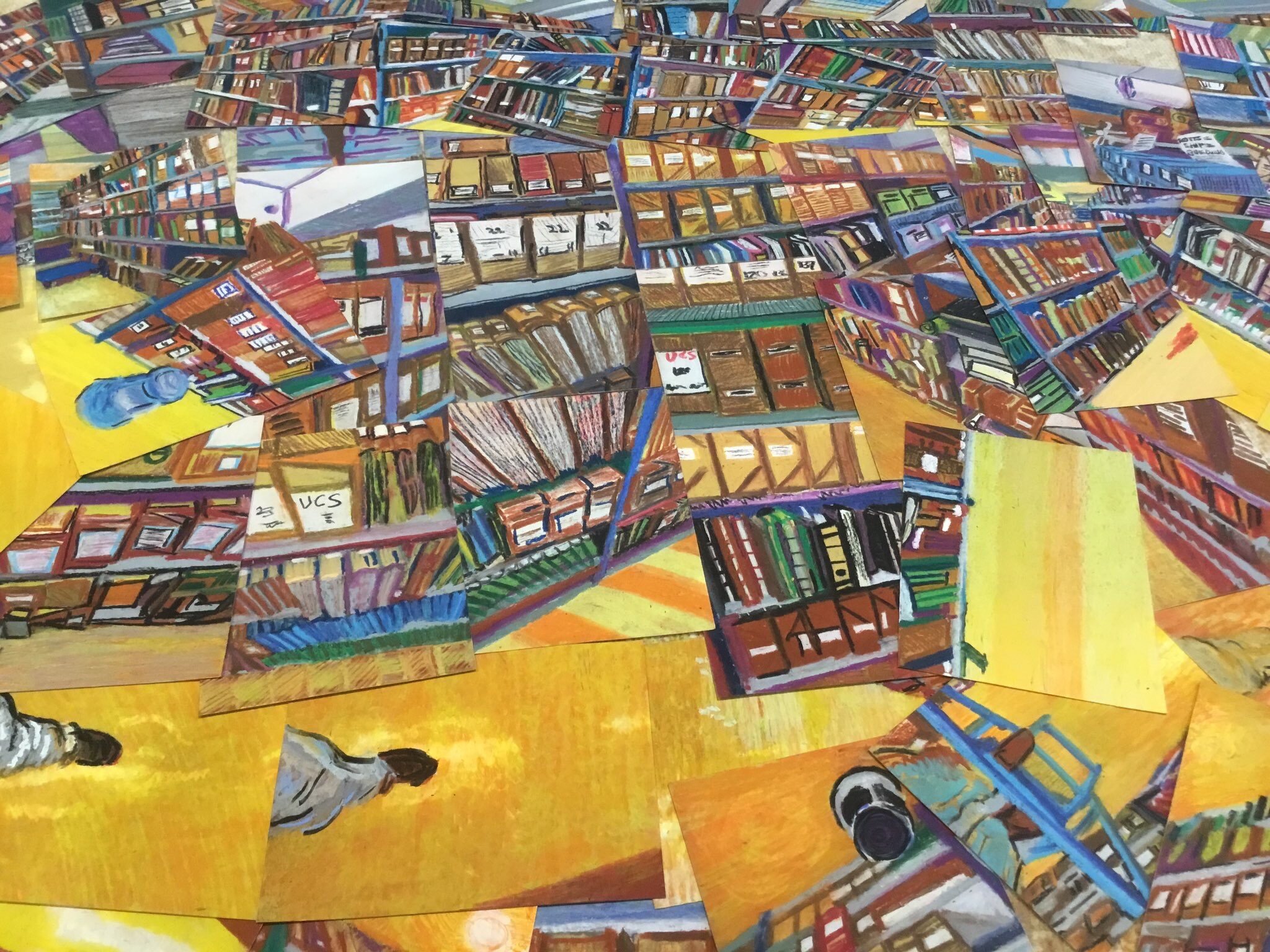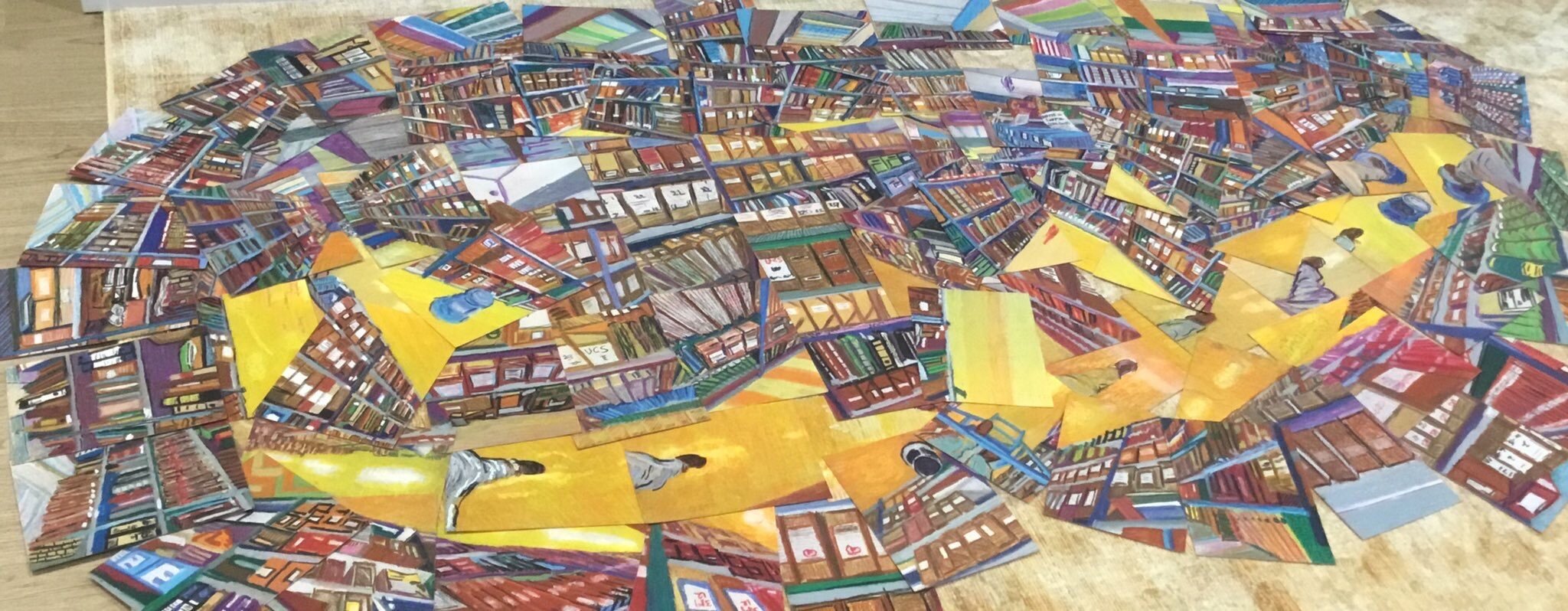Finding the records Original Order
Does Original Order matter? Does the original order matter? Currently the Archive drawings are catalogued as being a bundle, over 100 drawings have one unique identifier and sit inside a box. The accession paperwork has details of each drawings function, purpose behind construction, the date it was constructed. A cataloguing enhancement is required to ensure this information is not lost. However, is this information important? As archivist, I want to capture all this critical information. I would describe to item level capturing key information such as function, purpose, date of creation. The original order should be chronological. The artist is in conflict with this specific decision.
The drawings show the University of Glasgow Archives & Special Collections repository space. The original order can be established by piecing together each scene, creating a large mural to represent the space exactly as it is. But the intension behind the work is it captures the energy, the discreet activity of the space. The art is supposed to engage audiences, the audience can decide for themselves (no wrong answer) as to what the original order is. The artist fears cataloguing to item level will introduce a layer of rules, structure, that damages the artworks purpose. Additionally, the artist believes that the general concept behind their creation is enough for an archive catalogue. Even the documentation on this article of the mural layout showcases a collaboration between artist and digitisation officers, the artist is extremely keen to ensure that audience collaboration remains.
The artist also adds they absolutely hate creating these drawings. The process is extremely long, boring, methodical mark making is required, it is time consuming. Individually they risk becoming ‘pretty’, an artwork that speaks nothing about context. The first artist who ever had an impact on the artist was David Hockney. His artwork was why the artist entered art college in the first place. In 2012, the artist visited A Bigger Picture at the Royal Academy. It was an incredible exhibition, in particular for the iPad drawings. David printed out the drawings, exhibited them on the walls alongside the actual technology. Questions emerged, such as where is the original art? Is there such as thing as an original digital artwork? Western society values the authentic unique art object - but are now faced with multiple originals.
In the c1980s, Hockney transformed the perspective of the camera. Most of us take one photograph of a building. That is a timeless spilt second moment. However Hockey took hundreds of photos of the same scene. Capturing the discreet changes in weather, individuals movements, playing with perspective. I use the same method with these drawings, each oil pastel drawing is built to be photo realistic, working from observational sketches, all drawings are the same scale. When combined questions emerge about originality, original order, do the drawings provide historic or valuable information? These are key archival themes emerging.





